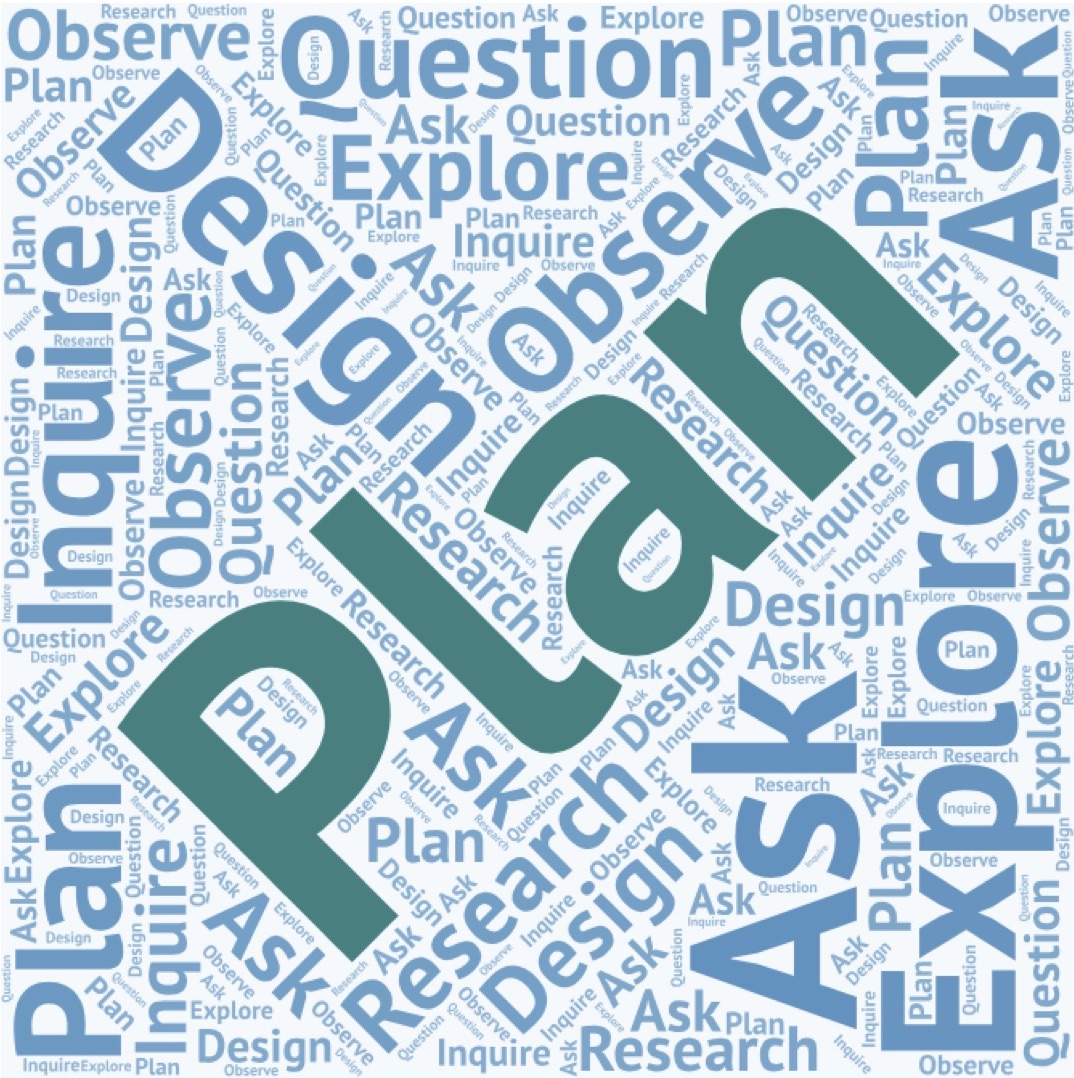Student Roadmap - Planning Your Study
Cross-check the Research Design with the Research Question to Plan the Course

When you think about science investigations you might picture the caricature of a scientist in his white lab coat pouring something into a beaker. Sure laboratory experiments are an essential part of science. But so are observational studies and investigations that use existing data.
Whatever kind of investigation fits your research question, spend some time thinking about variables of interest, kinds of materials needed, replicates needed, how much data to collect, how to measure and record.
IMPORTANT QUESTION: As you plan your experiment, keep asking yourself, "DOES MY EXPERIMENT ADDRESS MY RESEARCH QUESTION?" If you get off-track, just go back and tweak your investigation to focus on the question.
Define Your Investigation and Your Data
- Match your experimental methods to your research question.
- Make sense of the method and understand what it means for the method "to work."
- Define what you're testing.
- Make sure you have something to compare your "test" to! Usually this is a sample where you know what the outcome will be. This will show that your method was working properly in this run of the experiment.
Make your prediction based on an explanation that will convince your classmates that your prediction is credible. Include your working model in your explanation.
Ask your scientist for input at any point in the design process.
Estimate How Long You Will Need for the Investigation
You may need to set up an experiment on one day and complete it the next. You may want to run several trials over a couple of weeks to repeat the experiment. You may need to put plants in the dark or light for a weekend before you can use them. Plan your time accordingly.
Set Up Your Data Collection Plan
Set up your data collection sheet so that it's easy to compare data across your different environmental conditions, plant species, or other variable.
Figure out what data you will collect, how often you will collect it, how many samples you will test at each data collection point, and how you will record it.
Use measurements (such as length, time, volume) and counts (such as how many seeds, stomata, plants) whenever possible. If no measurements are available (for instance, purple color intensity), you might develop your own scale. Observations are important data too. Some students have developed ingenious measures for such things as "wetness" of soil using paper towels and a scale when no other instruments were available.
If you're making drawings, then you would also want to record what your drawing is and other details. Details could include when and where your specimen was collected, and perhaps even the environmental conditions (temperature, time of day, sunny, etc.) at the time of collection. What data you collect depends on what your research question and working models are.
Write a Research Plan
This is Where You "Make Your Case" for the Soundness of Your Research Question and the Ideas Behind It.
You've already done at least 50% of the work toward a research plan. You have thought through the connections between what you see, what you think you know, and how it relates to your research question.
Here's what to include in your research plan:
- What kinds of data will you be collecting?
- What tools and methods will you use to collect your data?
- What will your data look like?
- In what format will you collect your data (table, chart, etc.)?
- Also remember that description (qualitative data) is just as valid as numerical data. What kinds of observations can you make and record in your experiment?
- How you came up with the question.
- Include a diagram of your working models for photosynthesis and respiration.
- Explain how you think your research question relates or fits into your models for plant growth, photosynthesis and/or respiration, or whatever your topic is.
- A description of the experiment or experiments you will do to investigate your question.
- What you will be able to explain once your investigation is completed.
- How long you will have to do your investigation.
Get feedback from your scientist on your question on your research proposal.
Why do scientists test methods? Isn't this a waste of time?
Scientists often do trials to get a technique "up and running" before they launch into an experiment because materials are often expensive or they may have plant samples that are rare, were collected at a certain time of year, or from in a distant place! They may also have slightly different equipment than what was originally described. Scientists also usually do small pilot studies first to test out the planned data collection methods. They examine the preliminary results before embarking on a large research project.
Start with Exploring: Getting the Method to Work
This is a bit like trying out a new recipe before you make it for guests. Recipes aren't foolproof. If it comes out too salty or overcooked the first time you try it (but it's worth trying again), you'd make some changes to the recipe on the second trial. When it's time to cook for your guests, you'll have a recipe that looks and tastes good.
Getting a method to work means that:
- You understand the science behind it.
- You've tried it out and can convince yourself and others that it works.
- You are comfortable doing it.